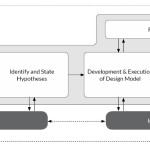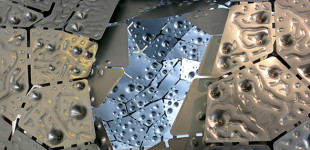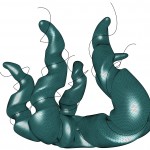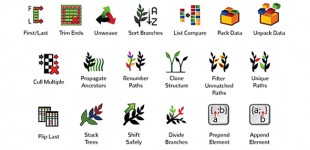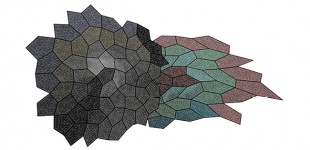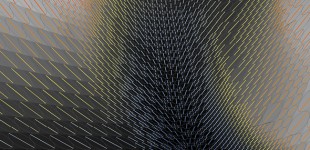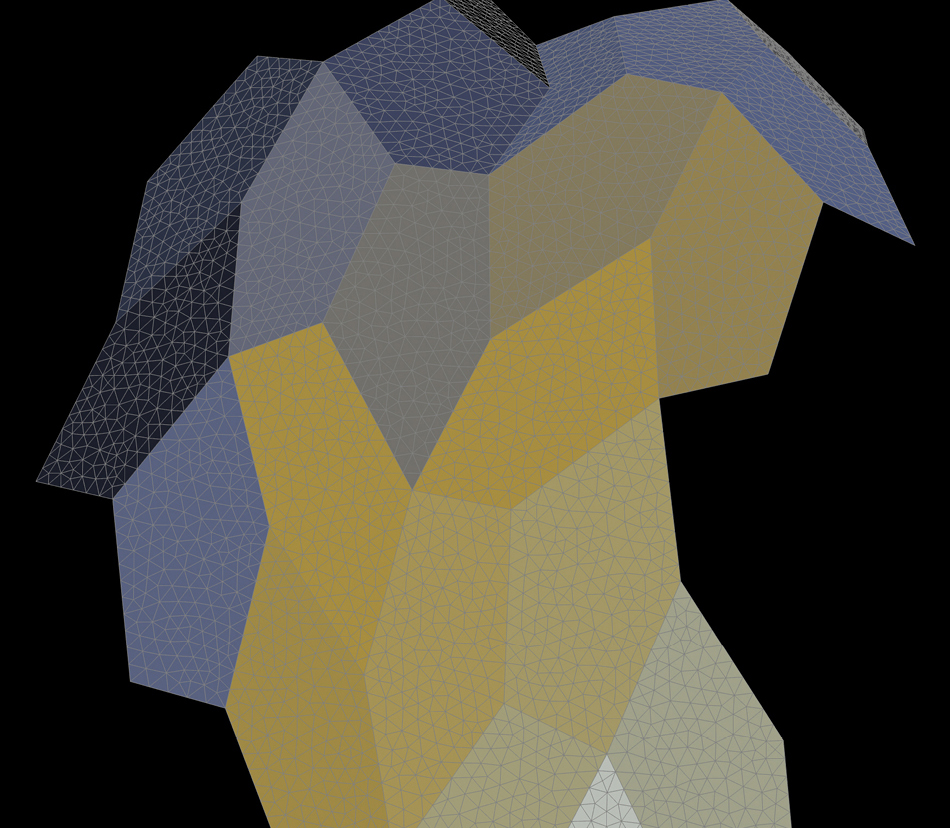bespoke geometry
Mesh Face Memory

Meshes afford designers with an opportunity to work with an instrument whose geometric representation is rich in information-carrying capacity. The topology of connections in design meshes enables their application for such operations as finite element analysis, insolation, solar heat gains, fluid dynamics, and others. Yet their geometric representation is also very lightweight, and designers are able to instantiate a great number of mesh objects without suffering from the heaviness of solid or nurbs-based models. Furthermore, mesh topologies can be used by designers to designate relationships between assembly systems. The tooling developed for the work outlined here seeks to instrumentalize the negotiation between multiple resolutions in a single mesh, such that an assembly-level object (in this case a panel) can be effectively discretized from a continuous mesh that is suitable for finite element analysis.
Using the Remeshing libraries developed by Daniel Piker and Will Pearson from Rhino + Grasshopper, here coarse assembly-level meshes whose topology is leveraged to define connectivity between meso-scale components are subdivided such that each new face both “remembers” its parentage and follows initial boundary conditions.
